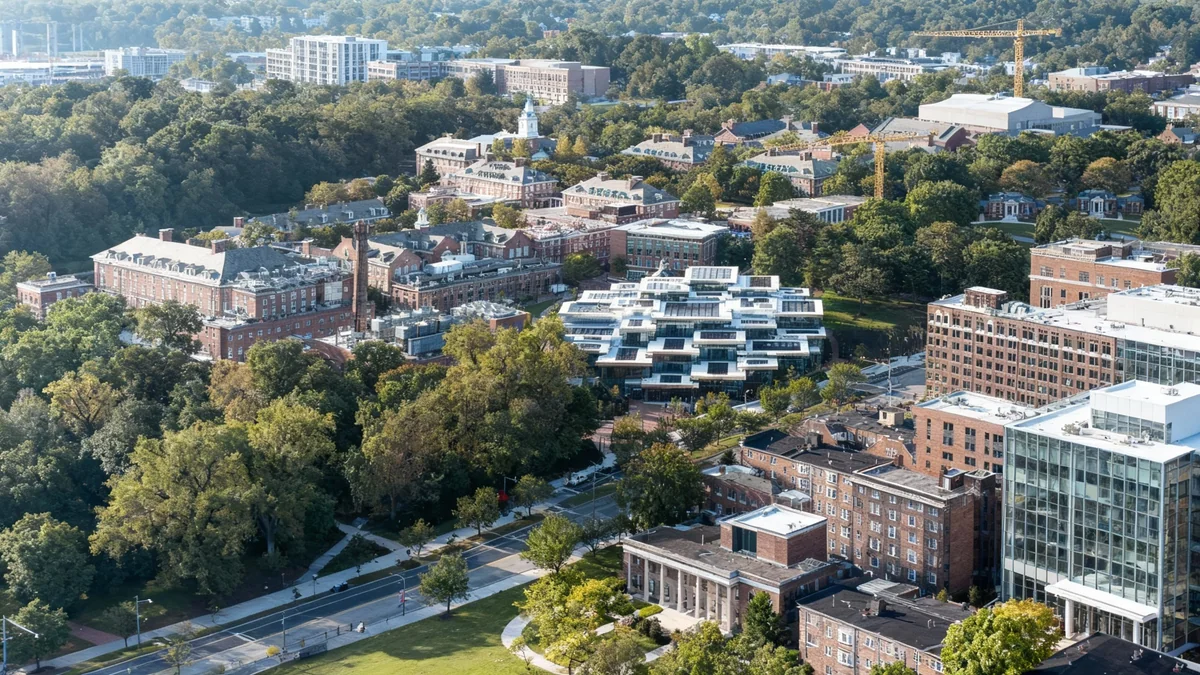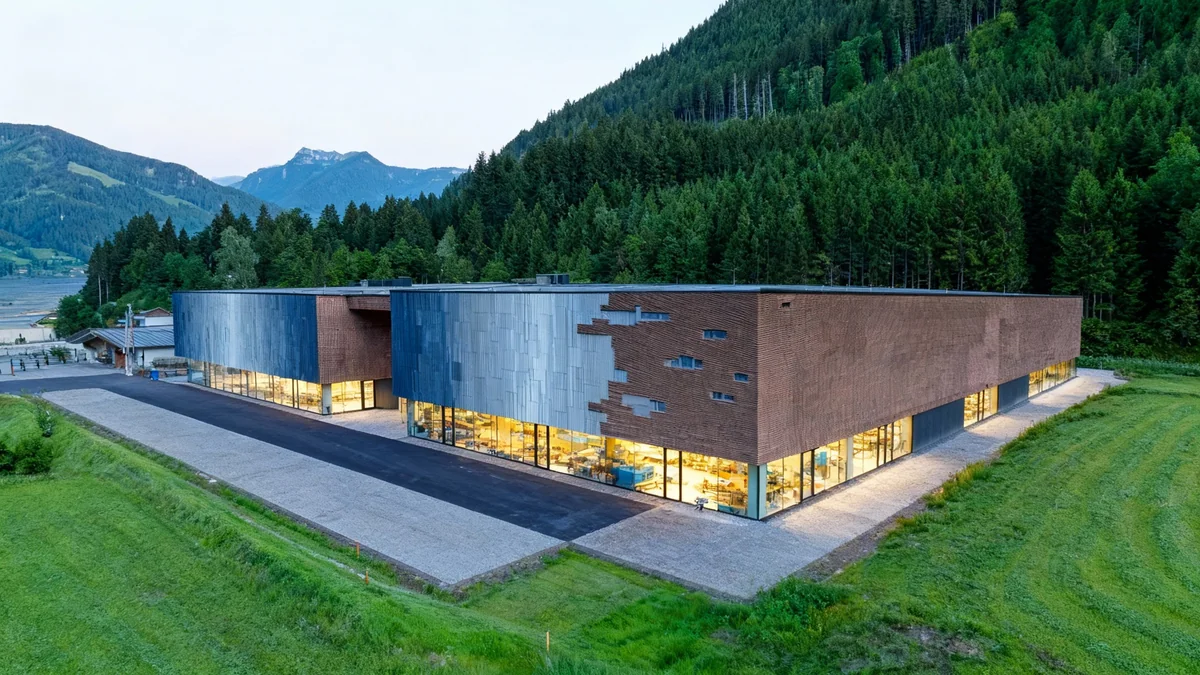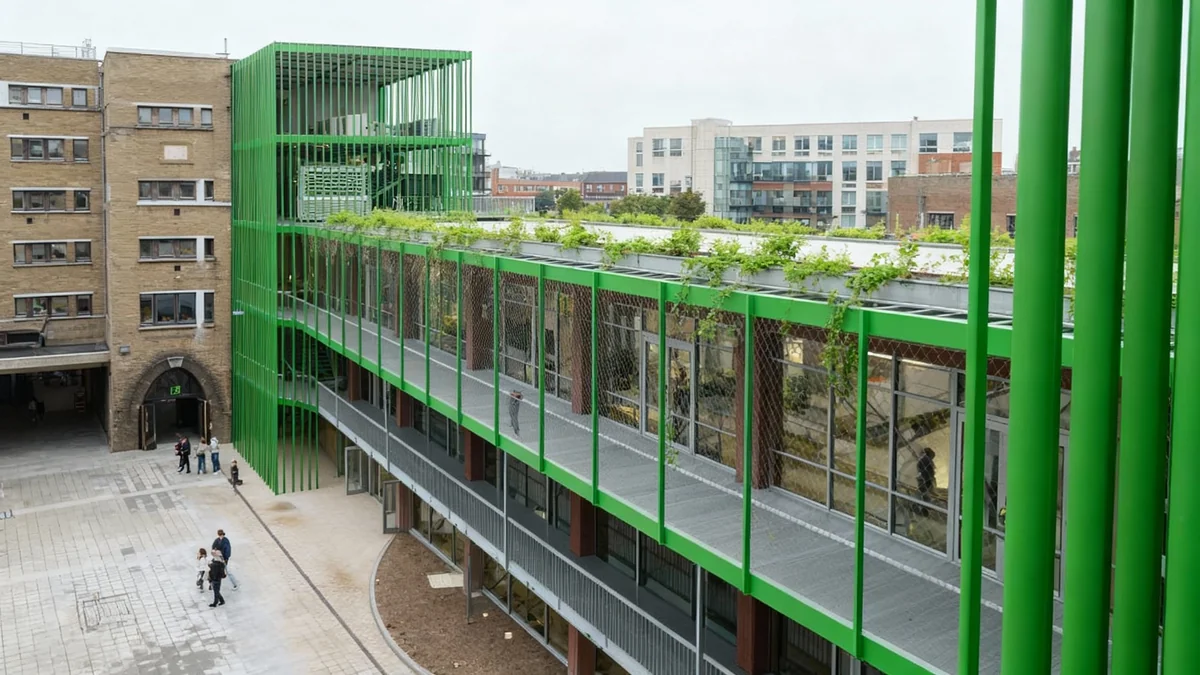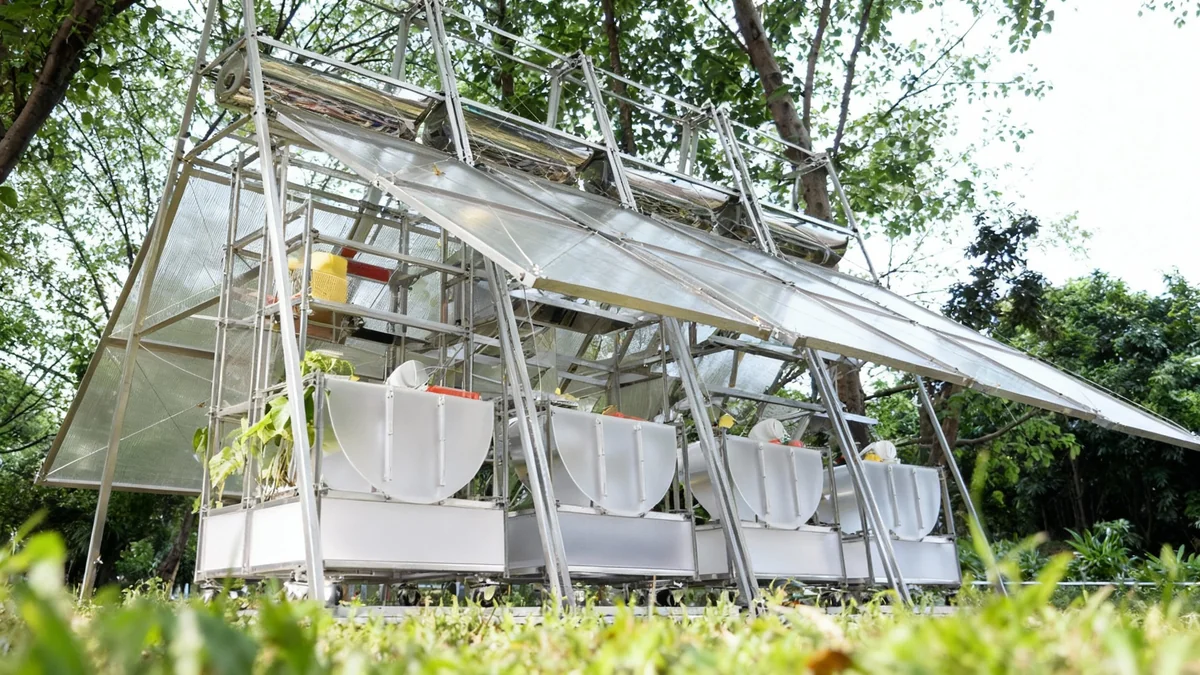Johns Hopkins University in Baltimore, Maryland, has officially opened its new Bloomberg Student Center, a significant addition to the Homewood campus. Designed by Danish architecture firm BIG and New York-based Rockwell Group, this 150,000-square-foot facility is the first building on campus dedicated entirely to student life. It features a unique mass timber construction, envisioned as a 'village of 29 pavilions' that ascend a natural slope on the university's edge.
The center aims to consolidate student activities, which were previously spread across various locations. It offers social spaces, a large food hall, performance venues, and numerous meeting rooms, all within a structure designed for environmental sustainability.
Key Takeaways
- Johns Hopkins University inaugurated the Bloomberg Student Center, its first dedicated student life building.
- The 150,000-square-foot structure features mass timber construction and a 'village' design.
- It includes a food hall, a 250-seat theater, dance studios, and club meeting rooms.
- The building targets LEED Platinum certification with solar panels and a rainwater cistern.
- BIG and Rockwell Group collaborated on the architecture and interior design.
Innovative Design and Sustainable Construction
The Bloomberg Student Center stands out with its distinctive architectural approach. BIG founder Bjarke Ingels described the center as a "village of timber pavilions climbing the natural hill on the university's edge." This design strategy creates a visually appealing structure that integrates with the campus landscape.
The building comprises multiple stacked, rectangular volumes. Each volume is constructed from mass timber and features glass enclosures. Flat, cantilevered roofs top each section, contributing to the building's stepped appearance as it rises along the 30-foot sloped site.
Project Facts
- Size: 150,000 square feet (14,000 square meters)
- Number of Pavilions: Conceived as 29 distinct pavilions
- Solar Power: Nearly 1,000 photovoltaic panels generate approximately half of the building's electricity.
- Water Conservation: A 20,000-gallon underground cistern collects rainwater for reuse.
Commitment to Environmental Goals
Sustainability was a core principle in the center's development. The project aims for LEED Platinum certification, a high standard for environmentally friendly buildings. The extensive array of solar panels on the roofs is a key component of this effort, providing a significant portion of the building's energy needs.
Beyond solar power, the building incorporates other green technologies. Double-glazed windows enhance insulation, reducing energy consumption for heating and cooling. Radiant floor heating systems further minimize heat loss, ensuring efficient temperature control throughout the year. A large underground cistern collects rainwater, which is then used for various non-potable purposes within the facility.
"The building was conceived as a series of cascading, mass timber-framed volumes with flat, cantilevered roofs topped with nearly 1,000 photovoltaic panels, which generate approximately half of the building's electricity," the design team stated. "The resulting 'village' of 29 pavilions is carved into its 30-foot sloped site."
Interior Spaces for Student Engagement
The interior of the Bloomberg Student Center is designed to be open and inviting. A central atrium serves as the heart of the building, varying in height to reflect the external volumes. Entrances on multiple sides of the structure lead into this central space, with the main entrance situated at the lowest level, adjacent to Charles Street, and opening onto an outdoor plaza.
Background on Student Life Facilities
Before the Bloomberg Student Center, student activities at Johns Hopkins University were often spread across various buildings and departments. This new center centralizes many of these functions, providing a dedicated hub for social interaction, dining, performance, and club meetings. This consolidation is expected to foster a stronger sense of community among students.
Diverse Amenities and Gathering Areas
The ground level houses a large food hall, a cafe, and a restaurant, making it a primary dining destination. A grand staircase ascends through the central atrium, featuring integrated lounge areas where students can relax or study. This staircase acts as a central artery, connecting different levels and fostering a dynamic flow of activity.
Clustered around the central atrium and within individual ascending volumes are various specialized rooms. These include a 250-seat performance theater, meeting spaces, dance studios, and dedicated club meeting rooms. This arrangement ensures that diverse student interests are accommodated within a single, cohesive facility.
- Food hall, cafe, and restaurant
- Lounge areas along a grand central staircase
- 250-seat performance theater
- Multiple dance studios
- Dedicated club meeting rooms
- Smaller general meeting spaces
Materiality and Aesthetic Choices
The interior design emphasizes natural materials, creating a warm and cohesive atmosphere. The exposed mass timber structure is a dominant feature, visible throughout the building. Acoustic dowel-laminated timber (ADLT) is used for ceilings, beams, and columns, contributing to both the aesthetic and acoustic quality of the spaces.
Rockwell Group, the interior architect, carefully selected additional materials to complement the timber. Limestone and white oak millwork are used to create a harmonious palette. These choices reinforce the building's sustainable ethos and connect the interior to the natural elements of the surrounding campus.
"We were inspired by the building's timber structure and column grid to organize a dynamic interior where natural materials, warm tones, and layered lighting create a sense of cohesion across a lot of different programmatic areas," said David Rockwell, founder of Rockwell Group.
Outdoor Integration and Campus Connection
The building's design extends beyond its internal spaces. Outside, patios and small landscaped gardens surround the structure, providing additional areas for students to gather. These outdoor elements seamlessly transition into the adjacent student quad at the top of the site, further integrating the center with the broader campus environment.
The project involved a large team of specialists. Michael Van Valkenburgh Ass., Inc. served as the landscape architect. Whitman Requardt & Ass., LLP. handled civil engineering, while WSP was responsible for mechanical, electrical, and plumbing engineering. Knippers Helbig provided expertise in structural engineering and exterior envelope consulting. Other consultants covered security, AV/IT, acoustics, lighting, code compliance, theater design, elevators, food service, door hardware, and building signage. Clark Construction Group served as the construction manager, with MGAC as the owner's representative.
This completion marks another significant project for both BIG and Rockwell Group in academic settings. Rockwell Group previously collaborated with Ennead Architects on a renovation project at Johns Hopkins University. BIG also completed an academic building at Claremont McKenna College in Los Angeles.




